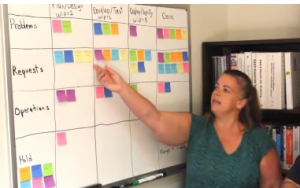
Look anywhere within the software industry, and you’ll see agile under construction. You’ve read about how it’s helping teams streamline large projects into smaller ones that are easier to manage and deliver. Being swift and agile has long been one of our company values here at SAS, and executing with agile techniques is helping us stay competitive. Agile may something you’re investing in too.
Scrum, one of the more popular agile techniques, is often associated with smaller teams even though it can be used by teams of any size. Indeed, much has been said about “large-scale agile” and since our adoption in 2007, we’ve had plenty of opportunities to adapt agile for teams sized from a few members to hundreds. Interested in learning from what we’ve learned? Let’s cover five of our top ten lessons to help accelerate your own adoption of agile across the enterprise.
1. Enlist a sponsor and an advocate. This practice may be the most straight-forward item here but the hardest to pull off. This pair is core to success, each role needing the other to succeed. Although management support at all levels is vital, find an executive sponsor who is willing to invest both mind and heart in the journey. Identify a leader who has earned a seat at the table with other executives and can connect with them. Second, recruit a tactical “business champion” to help with logistics of training, roll-out, and ongoing adoption. Here at SAS, I serve as that advocate and would love to hear from you if that’s your role too. These roles are vital because they give the entire organization mental permission to explore and apply agile with their teams.
2. Train, train, train. Agile is easy to understand but more difficult to apply because it represents behavioral change. Approach the training as formational to your new mode of operation because it is. Take the time you need to design it properly even if that’s months. Hosting two- to three-day classes for an entire team to attend is a sound investment in their future. Provide shorter specialty modules or “boot camps” to reach your entire spectrum of agile practitioners. Since starting, SAS has invested in training for over 2000 Research and Development employees.
3. Recommend best practices. Adopting agile practices is a lot like pharmacy. Mix the ingredients incorrectly, and bad things could happen. Determine which practices are the best match for your organization, and set achievable goals that each team can work towards. Espouse an overall model that is complementary to the training provided. Emphasize demos and team agreements that touch on all scrum practices: sprint length, roles, acceptance criteria, demo expectations and so on.
4. Beware cookie-cutters. This one may come across counter-intuitively, particularly for larger companies. Here at SAS, we don’t edict agile. We allow it to take form based on the personality of the team, product set and customer needs. We create an environment that allows teams to optimize and flourish. Let teams sort through how they’re applying agile to meet their unique complexity, even if it means sometimes taking one step back temporarily to go forward perpetually. Embrace the agile philosophy: Think big, act small, fail fast, learn rapidly.
5. Be patient. Don’t expect miracles overnight. Agile maturity takes time. Build on your successes and work through areas that need more attention. Nurture and nudge, but give different areas the time they need to latch on and call agile their own.
No gimmicks, it’s a straightforward list of ideas to help any team in their pursuit of agile. Granted, easier said than done, but stick to it and enjoy success as we are.
Next month, we’ll look at some other ideas SAS has found valuable in our journey employing agile practices at scale.
Tim
